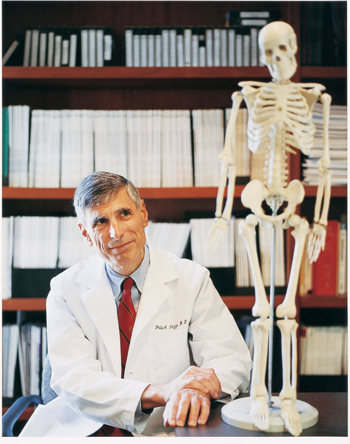 |
|
Dear Readers,
As dean of a medical school famous for high-tech discoveries, located in the midst of one of the world’s greatest hotbeds of technological progress, I get a reality check every time I run past the Stanford Dish. The trails surrounding that radio telescope are arguably one of Stanford’s most potent medical programs: They offer a daily health maintenance session — at least for those of us who walk, jog or run them.
For many years I have been a zealous long-distance runner and a strong proponent of exercise, weight control and diet to control personal health risk — whether acquired or inherited. While we all recognize that serious disease can strike regardless of one’s commitment to health, it is also a safe assumption that lifestyle and choice can have a big impact on reducing the likelihood of a host of human disorders.
It is all too easy to overlook simple interventions, such as exercise and diet. Medicine works best on bodies that have been treated well. Indeed, the August issue of the journal Radiology spells this out with a report that the rise in obesity is leading to increasing numbers of Americans whose fat is too dense to be penetrated by the X-rays and sound waves used for scans.
This special issue of Stanford Medicine will immerse you in the dynamic world of medical technology. You’ll read about miniature robots that remove gallbladders, laser beams that squeeze cells to test them for cancer and a “PDA on steroids” that connects health-care workers far from roads and telephone service to colleagues in the outside world. But while all of this technological wizardry enhances and extends life, limits remain. It can’t work miracles.
As one surveys the major diseases, nearly all are the interaction of genetic traits with the environment and personal lifestyle choices. The epidemic of obesity sweeping the nation and many parts of the world illustrates this. Since the late 1970s, obesity has more than doubled in 6- to 11-year-olds and tripled in 12- to 19-year-olds. Much of this increase results from dietary choices: These days, nearly 30 percent of the calories consumed by children are from sweets and soft drinks. And this is big business, as evidenced by the hundreds of millions of dollars spent on advertising junk food to children. The health consequences of obesity for the baby boomer generation also loom large as evidenced in the Aug. 24 issue of the New England Journal of Medicine, which reports that the risk of death increases by 20 to 40 percent among 50-year-olds who are overweight and that those who are obese carry even greater risks. The growing cost to society has even prompted some physicians and public health officials to suggest legal actions to address the problem — for instance, lawsuits against companies that misrepresent a food’s nutritional value.
Legal action might be part of the solution, but what’s even more important is for each of us to take steps to improve our own health. While the accomplishments of medical research and technology can boggle the mind, it’s folly to ignore the low-tech but high-power measures we can each take for our families and ourselves by making the right lifestyle choices.
With best regards,
Philip A. Pizzo, MD
Professor of Pediatrics and of Microbiology and Immunology
Carl and Elizabeth Naumann Professor
Dean, Stanford University School of Medicine

